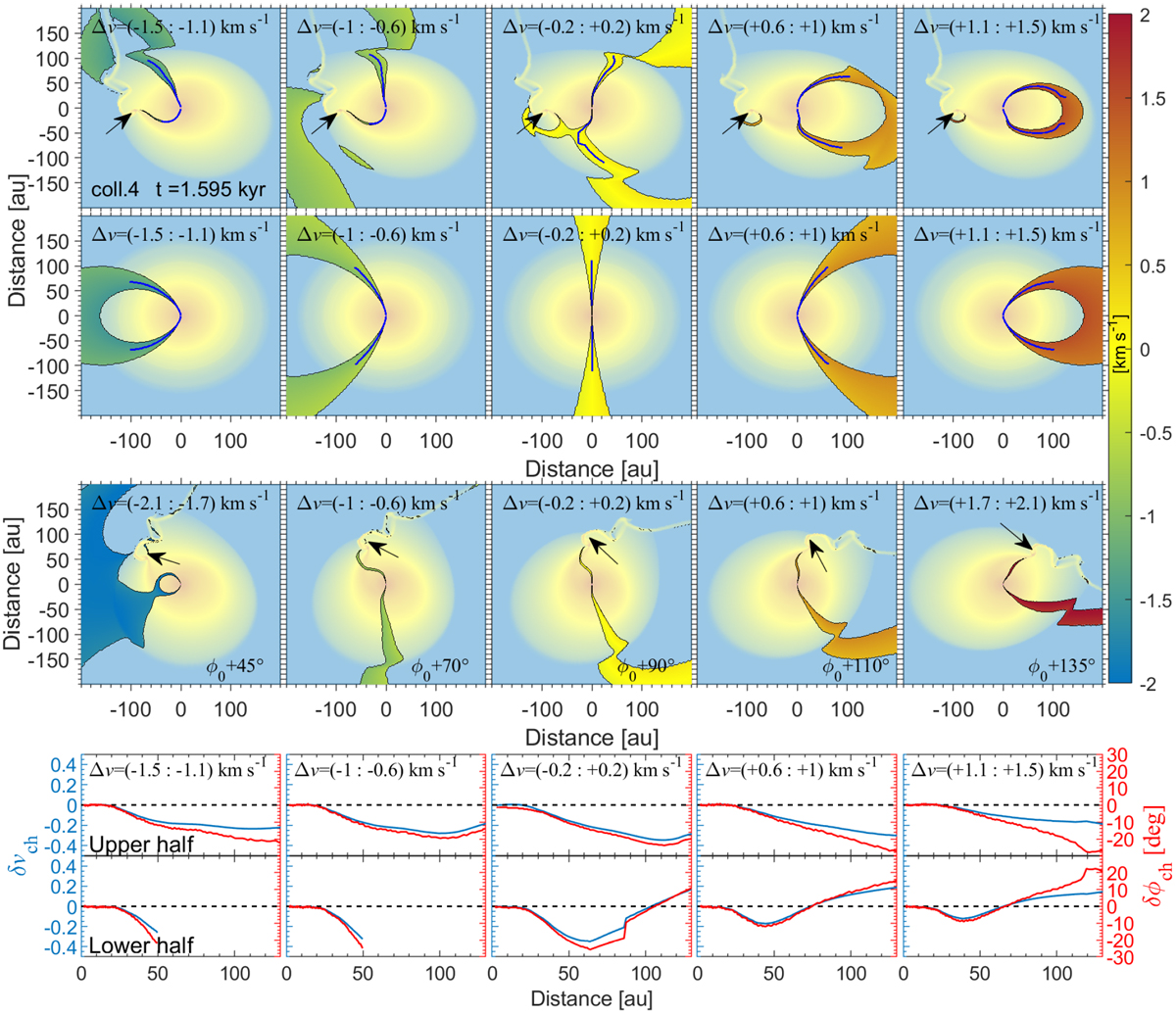Fig. 15

Line-of-sight velocity channel maps for the Collision4 burst at its peak luminosity (first row) vs. those of an idealized Keplerian disk (second row). The black arrows mark the position of the intruder that triggers the burst. Third row: zooms in on the intruder, which is viewed at different azimuthal angles as indicated in each panel. The disks are tilted by 30° with respect to the horizontal axis with the upper part being further out from the observer. The color bar presents the deviation from the zero-velocity in km s−1. The velocity intervals are indicated in each panel (note the difference in the zoomed-in case). The corresponding gas surface density maps are plotted in pale colors for convenience. The rotation is counterclockwise. Bottom row: deviations δϕch and δvch for the corresponding velocity channels. The values for the upper and lower halves of the disk are shown separately. The centers of the model and Keplerian channels are shown by the blue curves in the top and middle panels for convenience.
Current usage metrics show cumulative count of Article Views (full-text article views including HTML views, PDF and ePub downloads, according to the available data) and Abstracts Views on Vision4Press platform.
Data correspond to usage on the plateform after 2015. The current usage metrics is available 48-96 hours after online publication and is updated daily on week days.
Initial download of the metrics may take a while.


